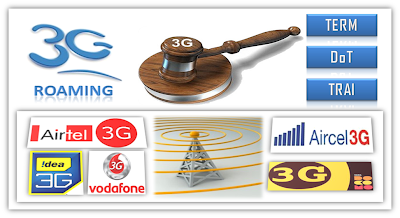Mobile gaming has really taken off in the past few years, and the continued growth of the underlying forces — smartphone sales, tablet sales, mobile Internet subscribers and app downloads — all point to a bright future for the industry.
Market research firm Mintel recently published a report on the U.S. mobile gaming industry — we took a look to glean insight into the consumption of and current attitudes toward mobile gaming.
First off, the numbers are impressive. Mobile phone and tablet gaming sales in the U.S. reached $898 million in 2010, more than doubling since 2005, and Mintel forecasts that revenues will reach $1.6 billion by 2015. This prediction is in line with eMarketer’s report that mobile gaming revenues are expected to reach $1.5 billion by 2014. With increasing smartphone sales, a growing tablet market and increasing advances in mobile device and game development, this industry is sure to get more interesting in the coming years.
Here are five key takeaways from Mintel’s report. Let us know your thoughts on the future of the mobile gaming industry in the comments below
1. The Freemium Model Has Potential:
One of the biggest tasks in marketing a mobile game is to figure out which revenue model to use: free (ad-supported), freemium (free download with in-app purchase options) or paid (one-time fee for a full-featured app).
The report points out that, on average, potential revenue for freemium apps outweighs paid apps. Mintel Senior Analyst Billy Hulkower writes:
“Apple enabled in-app purchases from its app store in the fall of 2009, allowing many developers to utilize the “freemium” model, in which the app is free to the user and the game can be enjoyed as is, or enhanced with additional virtual goods. In-app purchases include additional characters, enhancements, powers, and game play levels. Where a paid game may generate revenue from the sale price of the game from $0.99 to about $2.99 or more, a freemium game can actually earn greater revenues in the long run due to its potential ongoing stream of revenue from in-app purchases. Games tracked across 21 iPhone game makers in June 2010 by market research firm Flurry earned on average $14.66 per user per year. GigaOm estimated in November 2010 that 34% of the top 100 grossing apps (all types) on the iPhone used the freemium model.”
While the freemium model seems great in theory, paid games currently rule the industry, having brought in a whopping 92.5% of U.S. mobile gaming revenue in 2010, according to eMarketer. On the other hand, eMarketer predicts that revenue from free, ad-supported games will only amount to a measly 12.3% by 2014, not a significant growth. With ad-supported games lacking umph in coming years and freemium apps providing higher potential revenue for publishers, it seems natural that publishers will continue to innovate into the freemium space in hopes of increasing profits. As a result, we may see a balancing out of revenue between paid and freemium apps in coming years.
2. Tablet Gamers Download & Play More
Mintel found that 38% of tablet gamers play five or more hours per week, while only 20% of mobile phone gamers play that much. Tablet gamers even download more paid and free games.
Only 7% of those surveyed reported owning a tablet, but the findings make sense. Tablet devices have larger screen sizes and more computing power, while still being portable, potentially making them a better fit for gaming than mobile devices.
Forrester expects tablet sales will grow from 10.3 million units in 2010 to 44 million units in 2015 — growth that should further drive the mobile gaming market.
For now, console gaming still rules, having captured 75% of gaming revenue in 2011, followed by online, PC and mobile gaming.
3. Users Crave Multiplayer & Social Features
A multiplayer mobile game is often a re-branding of a multiplayer game for the PC or console. Most mobile games are single player mobile games perhaps with artificially intelligent opponents. Multiplayer functionality is achieved through:
- Infrared
- Bluetooth
- GPRS
- 3G
- Wi-Fi
- AI
- MMS
- Wireless LAN
“It is almost a cliché to discuss the importance of integrating social networking components into gaming, but consumers have not lost interest,” writes Hulkower. “They also enjoy multiplayer games for their competitive and social aspects. Despite their digital medium, ‘social’ and ‘multiplayer’ signify human interaction. Young adults, in particular, have grown up with computers, Internet, instant messaging/texting, and Facebook, and want to connect while gaming.”
There have been a few developments in the industry that foretell advances in social features. Apple’s social network gaming platform Game Center, launched in September 2010, enables gamers compete with each other and follow leader boards. Likewise, another platform, OpenFeint, enables iOS and Android gamers to play across platforms.
The success of multiplayer-only games, such as Words with Friends, also points towards consumer interest in mobile gaming with others
4. Word of Mouth Is the Key Driver for Game Downloads
Mintel’s report highlights a number of stats that tell the story of how users hear about new mobile games. Whether in the physical or digital worlds, word of mouth is the glue that holds it all together. Here are the top ways that gamers hear about new mobile games:
- From Friends: More than 50% of mobile game-playing adults learn about new mobile games from friends and family.
- In App Stores: About 40% of adults learn about new games within app stores, where hot lists, rankings and user reviews are highlighted.
- On Social Sites: 25% of adults hear about new mobile games via social media sites.
Besides these methods, there are also a number of well-trafficked mobile gaming sites that highlight and review games, chronicle new releases and publish cheat codes and tips.
Mobile game firms and publishers should take note and focus on obtaining visible app store distribution, having a social media presence and gaining coverage on mobile gaming sites.
5. Hit Games Can Come From Anywhere
While EA Mobile, GameLoft and Glu Mobile rank highest in mobile game publisher revenue, hundreds of independent game developers have released smash hits. For example, Rovio’s Angry Birds was the most downloaded game in Apple’s App Store in 2010 — in June, the game hit 1 million downloads per day.
While larger publishers, like EA Mobile and GameLoft, leverage high-profile licensing deals and partnerships, upstart developers — such as Popcap Games and Zynga — have built a name for themselves from the ground up, proving that innovative ideas can take smaller development firms far.





















